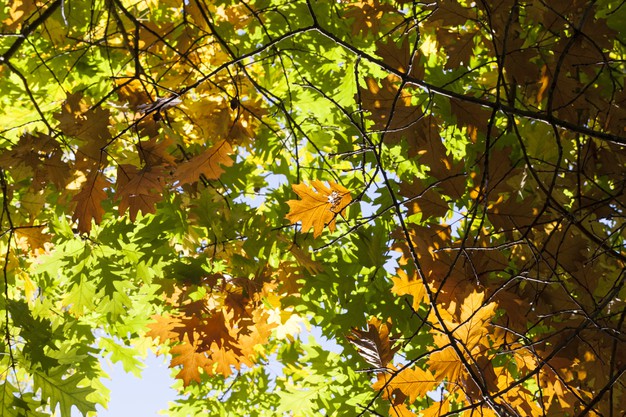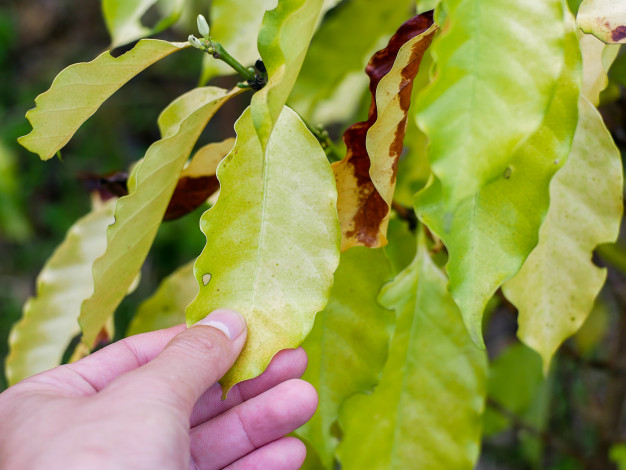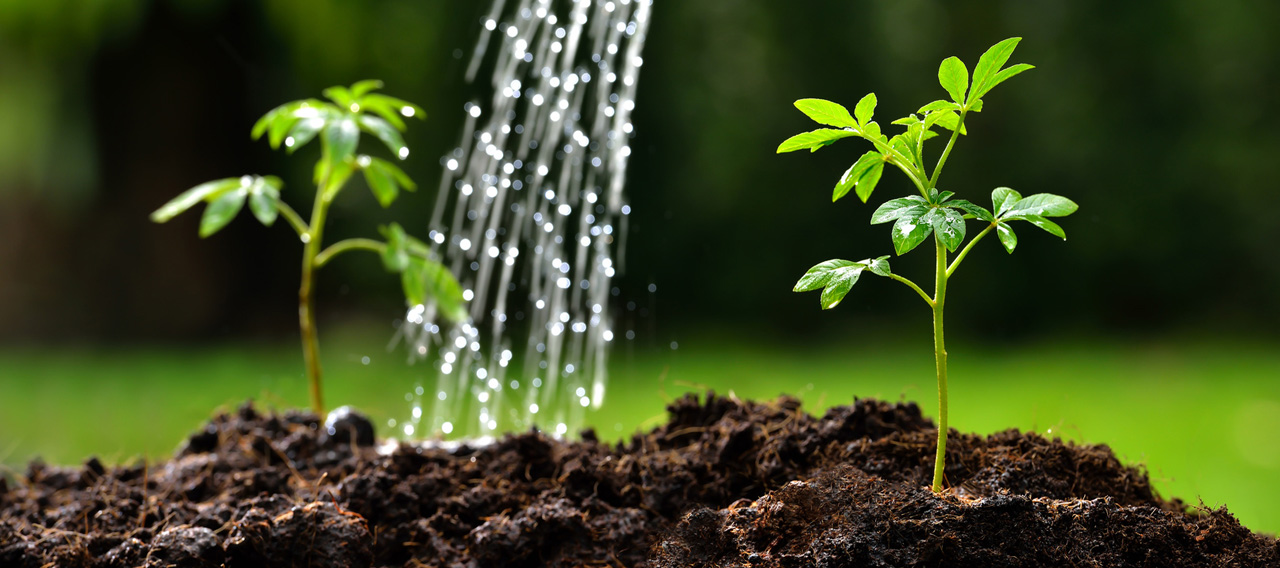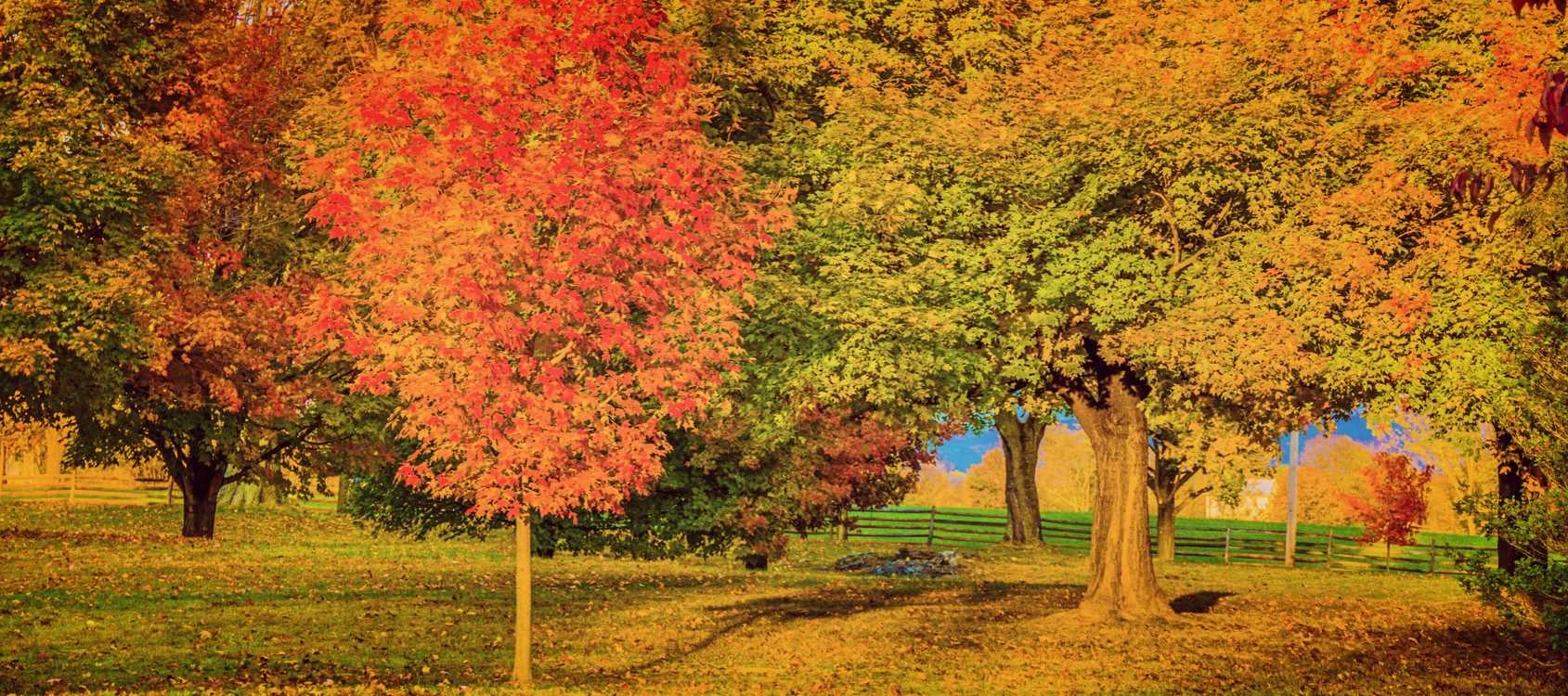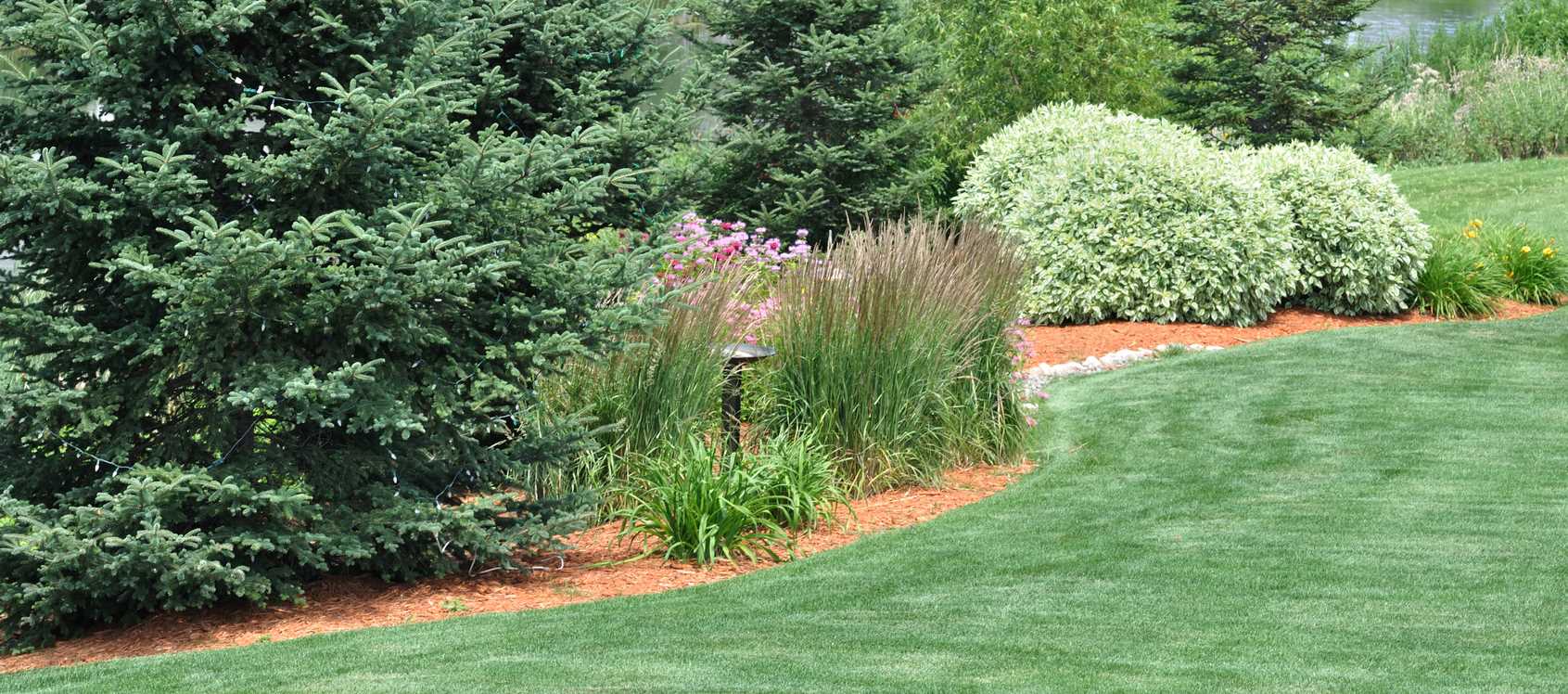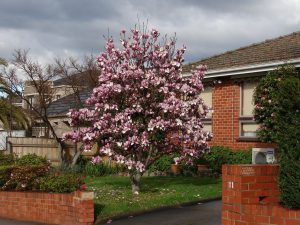Oak Wilt
Click Here To Download Oak Wilt
Oak Wilt
Tree species affected: Oaks, especially the red oak group
Concerns:Leaf discoloration and wilt, tree defoliation and death
Description: Oak Wilt is a lethal disease of oaks, especially species in the red oak group. The fungus responsible, Ceratocystis fagacearum, invades the tree, causing it to die. In Missouri, the oak wilt fungus is spread primarily when sap-feeding beetles carry oak wilt spores to fresh wounds during the early part of the growing season. Once established in a tree, oak wilt can move though root grafts connecting nearby oaks.
Symptoms and Signs: The first symptom of oak wilt in red oaks is usually browning and wilting of leaves in the upper crown in early summer (Fig. 1). White oaks often exhibit scattered branches with wilting leaves in the crown (Fig. 2). Wilted leaves display olive drab or light tan to bronze tissue starting at the margins and progressing toward the leaf base (Fig. 3). Brown or black streaking may be seen under the bark of wilted branches in both groups (Fig. 4). Rapid defoliation of red oaks can occur within two to six weeks of initial infection, and death occurs within a year. White oaks may take years to die from the infection. Under ideal conditions, oak wilt fungal mats form under the bark of dead red oaks the spring following tree death (Fig. 5), causing cracks in the bark and emitting a sweet, fermenting odor, attracting sap-feeding insects that spread the fungus. Squirrels may chew through the bark to expose these areas.
Jerral Johnson, Texas Agricultural Extension Service, 1995Fire wood Soil Line Plastic 6April 2013 Recommendation: Once a red oak tree displays extensive crown wilt symptoms, the tree will die. White oaks may survive the disease for several years with careful pruning of infected branches and good tree care. Accurate diagnosis of oak wilt is essential for appropriate treatments as other disorders can look similar. Contact your local MDC forester or see www.npdn.orgfor information on labs that can confirm oak wilt.
Two treatments can be considered to protect healthy, high-value red oak trees near infected trees: a professional arborist can inject fungicide before the trees show symptoms, or grafted roots can be killed through mechanical trenching or chemical applications. Root grafting is less common in Missouri than in some states, and is only likely to occur when oaks of the same species grow in close proximity. Fungicide application is costly, may need to be repeated every 1-3 years, and where root grafting occurs, is most effective when combined with graft disruption.
Counties confirmed with oak wilt in the last decade. The disease could be present in other areas.
Remove diseased trees after they have completely died but before the following spring when fungal mat development is possible. Removal of symptomatic trees prior to death can hasten movement of the fungus to adjacent oaks if root grafts are not first disrupted. Unseasoned firewood from infected trees can spread the disease; however, it is safe to burn, and burning destroys the fungus. Cover potentially infected firewood with 4-mil clear plastic and bury the edges with soil until the end of the following summer (Fig. 6). Landowners with oak wilt in woodlots or forests should consult their local MDC forester for appropriate treatment options.
Prevention: Avoid pruning or damaging oaks from mid-March through June. Oaks become more susceptible to the disease a couple weeks before bud break occurs in the spring. Immediately use commercial tree wound dressings, available from garden centers, on fresh wounds or storm damaged areas during the spring infection period (Fig. 7). Firewood movement should only occur locally to prevent movement of oak wilt and other invasive forest pests to new areas.

